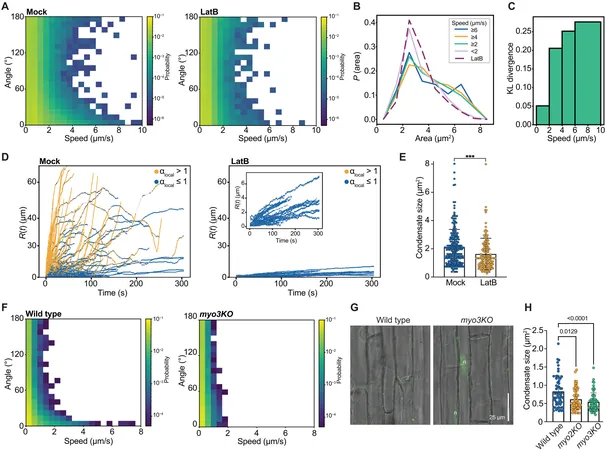
Revolutionary Discovery: How Myosin Powers Cellular Movement and Function
2025-05-28
Author: John Tan
Unraveling the Mysteries of Biomolecular Condensates
Biomolecular condensates are unique communities formed by DNA, RNA, and proteins that efficiently transport and concentrate essential molecules within cells. Recent studies have intensified efforts to decode the intricate mechanisms that control these condensation processes.
Groundbreaking Research from Leading Universities
A pivotal study published in Science Advances by teams from Washington University in St. Louis and Duke University shines a light on how molecular movements act as a catalyst for condensation in cells.
According to Rohit Pappu, the distinguished professor of biomedical engineering, "Protein condensation occurs when protein-specific saturation concentrations are crossed. Molecules that move directionally can create local supersaturation, fueling condensation processes."
The Impact of Auxin in Plant Growth
The researchers explored the role of auxin, a crucial plant hormone that drives growth by activating transcription factors in young cells. Interestingly, older cells regulate auxin’s influence by sequestering these transcription factors in cytoplasmic condensates, a mechanism first identified by Lucia Strader’s lab in 2019.
How Movement Fuels Cellular Function
The collaborative work from Pappu and Strader has revealed how cellular motility stabilizes cytoplasmic condensates. This stability is vital for managing stress responses and enabling effective communication within plant cells.
Myosin's Role in Cellular Architecture
The research highlights the crucial role of myosins—ATP-driven motor proteins that navigate along actin filaments, the structural backbone of cells. By facilitating the movement of condensates, these motors actively enhance their formation. Conversely, disrupting actin weakens this condensation.
A Broader Perspective on Cell Functionality
Strader emphasizes the significance of this research: "Our findings offer fresh insights into the regulations of condensation across various cell types and biological kingdoms. The influence of molecular motility on condensation processes may be more common than previously thought."
Future Directions and Implications for Development
Looking ahead, the research team aims to investigate how plants utilize different condensation strategies of auxin-responsive factors during root development. This inquiry extends its relevance to long cells like axons, highlighting potential implications for neurotransmission and neurodegenerative conditions.



 Brasil (PT)
Brasil (PT)
 Canada (EN)
Canada (EN)
 Chile (ES)
Chile (ES)
 Česko (CS)
Česko (CS)
 대한민국 (KO)
대한민국 (KO)
 España (ES)
España (ES)
 France (FR)
France (FR)
 Hong Kong (EN)
Hong Kong (EN)
 Italia (IT)
Italia (IT)
 日本 (JA)
日本 (JA)
 Magyarország (HU)
Magyarország (HU)
 Norge (NO)
Norge (NO)
 Polska (PL)
Polska (PL)
 Schweiz (DE)
Schweiz (DE)
 Singapore (EN)
Singapore (EN)
 Sverige (SV)
Sverige (SV)
 Suomi (FI)
Suomi (FI)
 Türkiye (TR)
Türkiye (TR)
 الإمارات العربية المتحدة (AR)
الإمارات العربية المتحدة (AR)